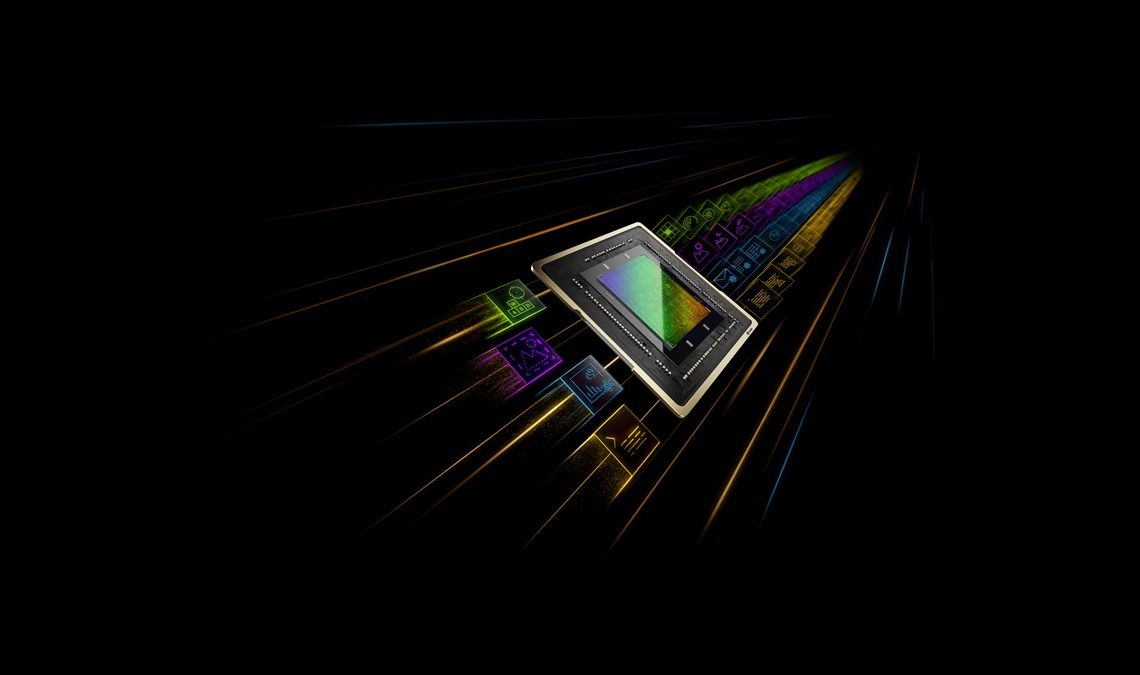
Nvidia launched its RTX 500 and 1000 Ada Generation laptop graphics processing units (GPUs) for on-the-go AI processing.
These high-end GPUs use the Ada Lovelace architecture. They’re aimed at empowering content creators, researchers, and engineers with AI acceleration and graphics performance, even while working from portable devices. Nvidia made the announcement ahead of the Mobile World Congress in Barcelona.
As generative AI and hybrid work setups become integral to various industries, the demand for potent mobile solutions has skyrocketed. The RTX 500 and 1000 GPUs are targeted at this demand, offering a combination of generative AI and graphics performance for professionals tackling diverse challenges.
The new GPUs will be featured in upcoming mobile workstations, expanding NVIDIA’s Ada Lovelace architecture-based lineup. These include the previously released RTX 2000, 3000, 3500, 4000, and 5000 Ada Generation Laptop GPUs.
AI is increasingly being integrated into professional workflows, transforming design, content creation, and everyday productivity. The next generation of mobile workstations featuring Ada Generation GPUs will incorporate a neural processing unit (NPU), a component of the CPU, along with an Nvidia RTX GPU equipped with Tensor Cores for advanced AI processing.
This dual creation is designed to handle both light AI tasks and demanding day-to-day AI workflows, providing users with up to 682 TOPS of AI performance.
The enhanced AI acceleration facilitated by the GPU is crucial for various tasks, such as video conferencing with high-quality AI effects, streaming videos with AI upscaling, and accelerating generative AI and content creation applications.
The RTX 500 GPU stands out for delivering up to 14 times the generative AI performance for models like Stable Diffusion, up to 3 times faster AI-assisted photo editing, and up to 10 times the graphics performance for 3D rendering compared to a CPU-only configuration.
These GPUs are expected to enhance professional workflows across industries, enabling video editors to utilize AI for noise reduction, assisting graphic designers in upscaling blurry images, and facilitating higher-quality video conferencing and streaming experiences.
For advanced rendering, data science, and deep learning workflows, Nvidia offers a comprehensive lineup, including the RTX 2000, 3000, 3500, 4000, and 5000 Ada Generation Laptop GPUs. These GPUs cater to the needs of 3D creators, businesses leveraging AI denoising, and researchers experimenting with data science and AI model training.
The RTX 500 and 1000 GPUs, based on the Ada Lovelace architecture, bring advancements to thin and light laptops, including third-generation RT Cores, fourth-generation Tensor Cores, Ada Generation CUDA cores, dedicated GPU memory, DLSS 3 technology, and an AV1 encoder. These features collectively contribute to superior graphics and compute performance in a portable form factor.
The new Nvidia RTX 500 and 1000 Ada Generation Laptop GPUs are set to be available this spring in mobile workstations from global manufacturing partners, including Dell Technologies, HP, Lenovo, and MSI.
Author: Dean Takahashi
Source: Venturebeat
Reviewed By: Editorial Team



